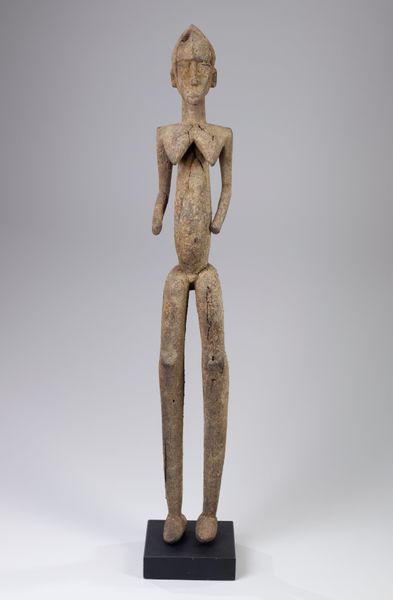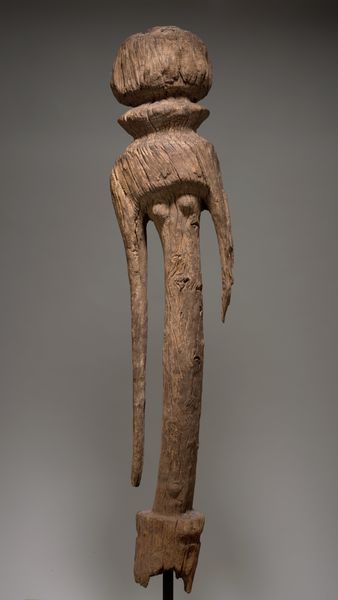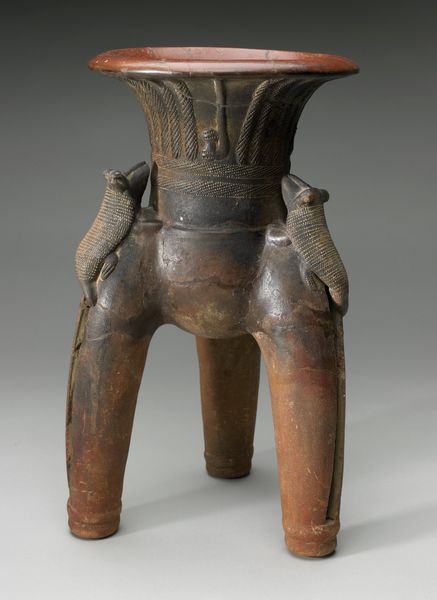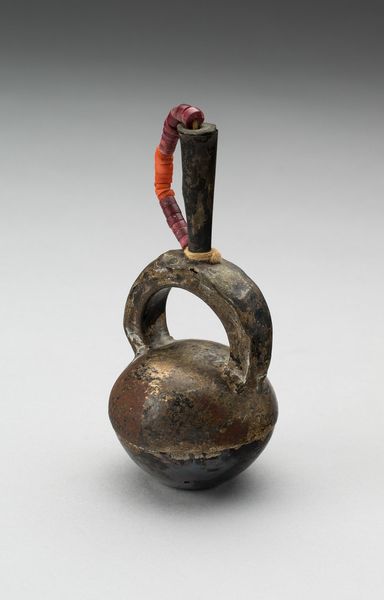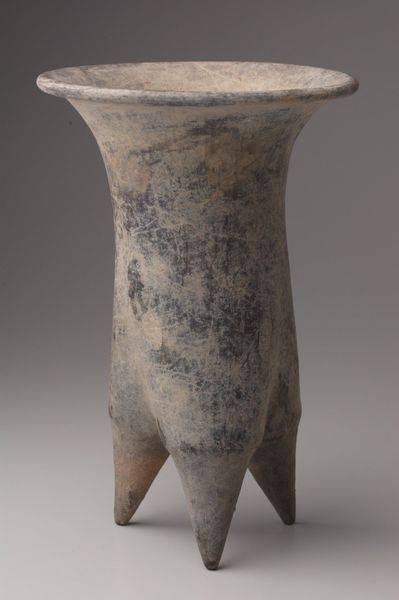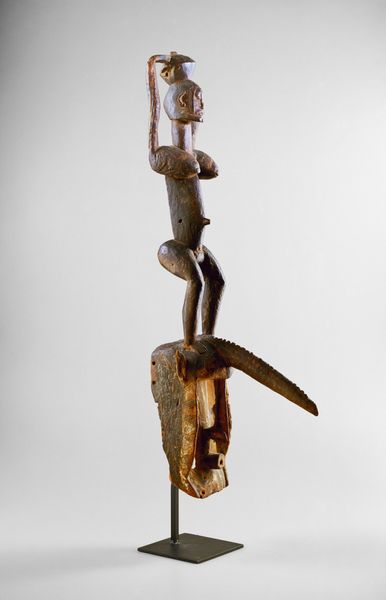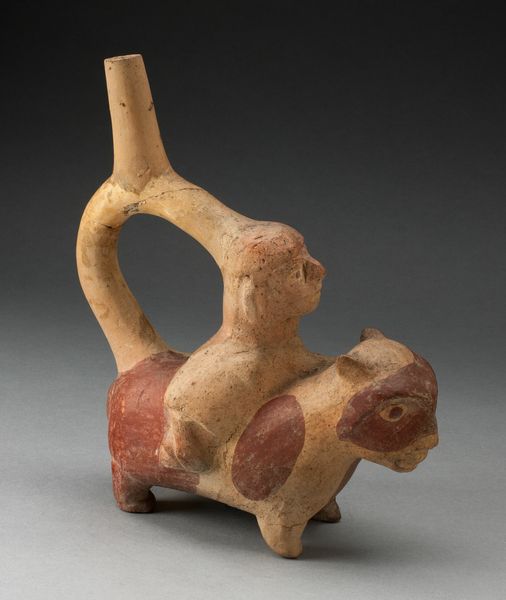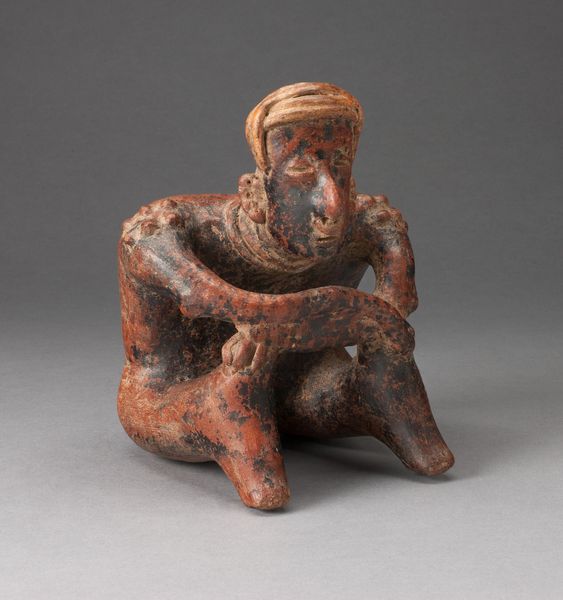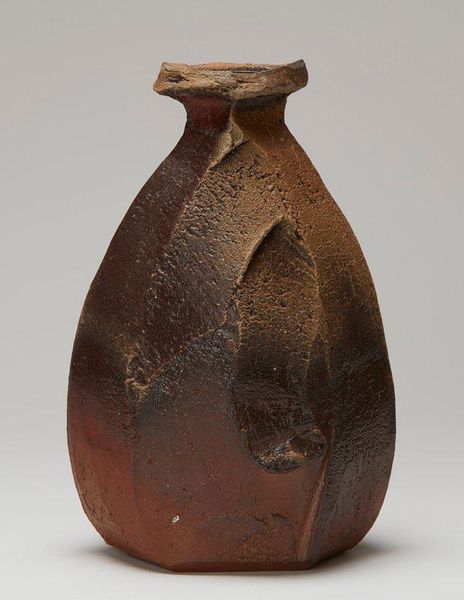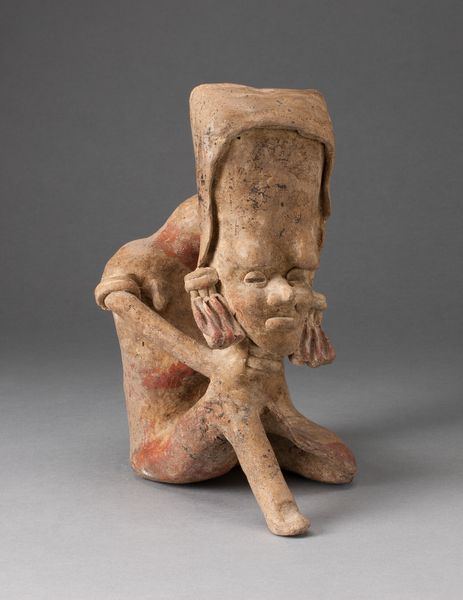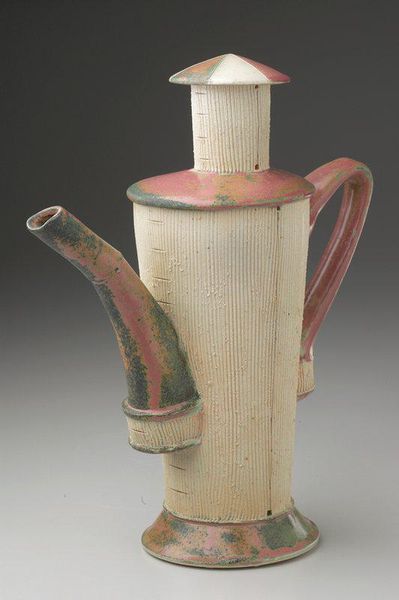
ceramic, earthenware, sculpture
#
sculpture
#
asian-art
#
ceramic
#
sculptural image
#
form
#
earthenware
#
geometric
#
ancient-mediterranean
#
sculpture
Dimensions: 16 1/2 x 7 x 7 in. (41.91 x 17.78 x 17.78 cm)
Copyright: Public Domain
The Erlitou people, whoever they were, made this tripod ewer out of clay, but when, we don’t know. It's all about that smokey, grey-brown hue, achieved with a high-heat firing process - how wild is that? It’s a bit like looking at a modernist sculpture, like Brancusi maybe, but also something totally alien. Check out the surface; it's got this beautifully uneven texture. You can almost feel the hands that shaped it, the little imperfections that make it feel alive. And those three legs, right? They give it this grounded, sturdy vibe, like it could stand its ground through anything. Then there's the handle, this simple, elegant curve that invites you to pick it up, to pour. It reminds me of the work of Lucie Rie, that beautiful simplicity and utility of form. But really, it's a testament to the way art speaks across time. It’s not about perfection, but about the journey of the making itself, and the dialogue it creates between the maker and us.
Comments
minneapolisinstituteofart almost 2 years ago
⋮
The Bronze Age succeeded the Neolithic or Stone Age during the second millenium BCE in the Yellow River region of north China. The Erlitou culture with its site near Luoyang in Henan province dating between 2000 and 1500 BCE, has yielded the earliest bronze vessels in China as well as pottery vessels modeled on bronze prototypes. The overall design of this elegant, thin walled, pouring vessel, including its pointed hollow tripod legs, wide, flat handle with incised surface decoration, and domed cover with cut-out spout is typical of ceramics excavated at Erlitou sites in the middle region of the Yellow River. While metal prototypes for such a work are presumed, no exact bronze prototype has yet been excavated.
Join the conversation
Join millions of artists and users on Artera today and experience the ultimate creative platform.

